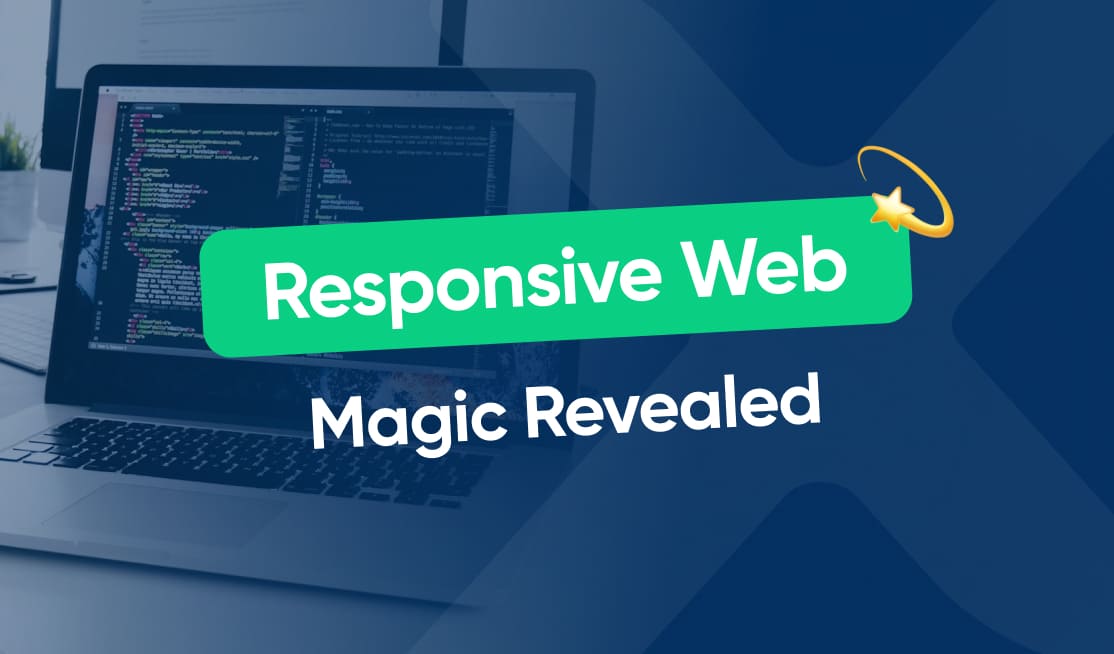
Responsive web design is a fundamental concept in modern web development. With the ever-increasing variety of devices and screen sizes on the market, it is essential to ensure that websites are accessible and visually appealing on any platform. In this article, we will explore the power of CSS Grid and Flexbox as tools for creating responsive web designs.
Understanding the Basics of Responsive Web Design
Responsive web design refers to the practice of creating websites that adapt and look great across different devices and screen sizes. This approach ensures that users have a consistent and enjoyable experience, regardless of whether they are browsing on a desktop computer, laptop, tablet, or smartphone.
When it comes to responsive web design, one important aspect to consider is the use of flexible grids. These grids allow web developers to create layouts that can easily adapt to various screen sizes, ensuring that the content remains organized and visually appealing. By using percentages instead of fixed units like pixels, elements on the webpage can adjust proportionally to fit different screen dimensions.
The Importance of Responsive Web Design
Responsive web design is not just a trend; it is a necessity in today’s digital landscape. With the rapid growth of mobile devices, more and more users access websites through mobile browsers. A failure to provide a responsive experience could lead to frustrated users, high bounce rates, and a negative impact on search engine rankings.
Another crucial aspect of responsive web design is the use of media queries. These queries allow developers to apply different styles to a webpage based on the characteristics of the device, such as its screen width, orientation, or resolution. By using media queries effectively, websites can deliver optimized layouts and content for each specific device, enhancing the user experience.
Key Elements of Responsive Web Design
There are several key elements that contribute to a responsive web design. These include flexible layouts, fluid images, and media queries. By utilizing these techniques, web developers can create websites that automatically adjust their layout, font sizes, and image sizes to fit the dimensions of the user’s screen.
Introduction to CSS Grid
CSS Grid is a powerful layout system that allows developers to create complex grid-based designs with ease. It introduces a two-dimensional grid system, which gives developers precise control over the placement and alignment of elements on the page.
One of the key features of CSS Grid is its ability to create both simple and intricate layouts without the need for excessive nesting of HTML elements. This simplifies the structure of the code and makes it easier to maintain and update the layout as needed. With CSS Grid, developers can easily achieve designs that were previously challenging to implement using traditional CSS methods.
Fundamentals of CSS Grid
Understanding the fundamentals of CSS Grid is essential for creating responsive designs. The grid is made up of rows and columns, and elements can be placed within specific cells of the grid. This allows for sophisticated layouts that adapt to different screen sizes and orientations.
Furthermore, CSS Grid provides developers with the ability to create grid templates that define the structure of the layout, making it easier to maintain consistency across multiple pages of a website. By using named grid areas and grid templates, developers can streamline the design process and ensure a cohesive look and feel throughout the site.
Benefits of Using CSS Grid in Web Design
CSS Grid offers several advantages over traditional layout methods. It provides better control over the placement of elements, reduces the need for complex CSS positioning, and simplifies the code required to create sophisticated designs. Additionally, CSS Grid allows for more intuitive and flexible responsive layouts.
Another benefit of CSS Grid is its support for grid auto-placement, which automatically positions items within the grid based on available space. This feature eliminates the need for manual positioning of elements and ensures a more fluid and dynamic layout that adapts to different screen sizes seamlessly. With CSS Grid, developers can create visually stunning and responsive designs that enhance the user experience across various devices.
Deep Dive into Flexbox
Flexbox is another powerful tool for creating responsive web designs. It provides a one-dimensional layout system that is ideal for arranging elements in a row or column, making it perfect for creating flexible and dynamic designs.
When delving deeper into the world of Flexbox, it’s important to understand the main properties that drive its functionality. These properties include display, flex-direction, justify-content, align-items, and flex. By utilizing these properties effectively, developers can craft intricate layouts with ease.
The Concept of Flexbox
Flexbox is based on the concept of flex containers and flex items. By designating an element as a flex container, its child elements become flex items that can be positioned and aligned within the container. This approach allows for easy reordering of elements and automatic adjustment of their sizes.
Furthermore, Flexbox introduces the concept of the main axis and cross axis, which dictate the direction in which flex items are laid out. This distinction plays a crucial role in determining how items are aligned and distributed within the flex container.
Advantages of Flexbox in Responsive Design
Flexbox offers numerous advantages for responsive design. It provides a simple and intuitive way to create flexible layouts that automatically adapt to different screen sizes. Flex containers can dynamically adjust the size of their child elements to accommodate changes in content or screen dimensions.
Moreover, Flexbox excels in handling complex alignment scenarios, such as centering items both vertically and horizontally within a container. This level of control makes it a valuable asset for crafting visually appealing and structurally sound web layouts.
Comparing CSS Grid and Flexbox
Both CSS Grid and Flexbox offer powerful layout capabilities, but they have different strengths and use cases. Understanding their similarities and differences can help developers choose the right tool for each project.
When it comes to creating layouts, CSS Grid provides a two-dimensional layout system, allowing you to create rows and columns simultaneously. This makes it ideal for creating intricate designs where elements need to be precisely positioned in relation to each other. On the other hand, Flexbox is a one-dimensional layout model, perfect for aligning items within a single row or column. It offers more control over the alignment and distribution of elements along the main axis and the cross axis.
Similarities and Differences
CSS Grid and Flexbox share some similarities, such as the ability to create responsive designs. However, they have distinct differences in terms of layout capabilities and browser support. CSS Grid is best suited for creating complex grid-based layouts, while Flexbox excels at arranging elements in a row or column.
Another key difference between CSS Grid and Flexbox is how they handle alignment. Flexbox provides a range of alignment options, including aligning items at the start, center, end, or stretching them to fill the available space. CSS Grid, on the other hand, offers more control over the placement of items within grid tracks, allowing you to align items along both the horizontal and vertical axes with ease.
Choosing Between CSS Grid and Flexbox
Choosing between CSS Grid and Flexbox depends on the specific design requirements of the project. In some cases, it may be beneficial to use both techniques in combination to leverage their respective strengths. By carefully assessing the layout needs and considering browser support, developers can make informed decisions.
Combining CSS Grid and Flexbox for Responsive Design
One powerful approach to responsive design is combining CSS Grid and Flexbox techniques. This hybrid approach allows developers to create sophisticated layouts that combine the strengths of both methods.
When integrating CSS Grid and Flexbox, developers can leverage the precise control of layout offered by CSS Grid while also harnessing the flexibility and alignment capabilities of Flexbox. By strategically combining these two layout models, designers can achieve intricate designs that adapt seamlessly to various screen sizes and devices.
Strategies for Combining CSS Grid and Flexbox
There are multiple strategies for combining CSS Grid and Flexbox. For example, developers can use CSS Grid for overall page structure and then employ Flexbox within specific areas of the grid to create flexible content modules. This approach provides a balance between grid-based layouts and flexible content.
Another effective strategy is to use Flexbox for organizing individual components within a grid cell, allowing for dynamic resizing and alignment of elements within designated areas of the layout. This method enhances the responsiveness of the design while maintaining the overall structure provided by CSS Grid.
Best Practices for Using CSS Grid and Flexbox Together
To ensure a smooth workflow and maintain a clean codebase when using CSS Grid and Flexbox together, it is essential to observe best practices. These include structuring the layout with a mobile-first approach, using the appropriate CSS properties, and thoroughly testing across different devices and browsers.
Moreover, optimizing the performance of a website that utilizes both CSS Grid and Flexbox involves minimizing the use of unnecessary nested containers and avoiding over-reliance on specific alignment properties. By following best practices and keeping the code streamlined, developers can enhance the efficiency and maintainability of their responsive designs.
In conclusion, responsive web design is vital for accommodating the diverse landscape of devices and screen sizes. With CSS Grid and Flexbox, developers have powerful tools at their disposal to create flexible, adaptable, and visually appealing layouts. Understanding the basics, comparing their capabilities, and strategically combining them will enable developers to deliver exceptional user experiences in the responsive web design era.


